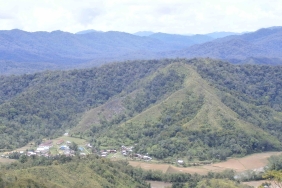HALFWAY THROUGH THE WORLD TIGER CONSERVATION DEAL
By: Diah R. Sulistiowati
On April 12-16, there was a ministerial meeting to discuss tiger conservation in the world, or Asia Ministerial Conference on Tiger Conservation. This is the third time this meeting has taken place in the world. First held in 1994 in Berlin, the meeting was attended by 13 countries that have or have had tigers: Indonesia, India, Nepal, Bhutan, Malaysia, China, Russia, Myanmar, Thailand, Lao PDR, Cambodia, Myanmar and Bangladesh. Although Tigers in Cambodia and Myanmar are considered extinct, efforts are being made to introduce Tigers from India. This is the middle of the road for global Tiger conservation which is to increase 50% of the world population by 2022 or #doublenumber or also known as the Tx2 logo.
The agreement opened with the announcement of the world population figures for Tigers, which were announced for the first time, increasing from 3200 in 2010 to 3890. This figure was derived from IUCN data collection, national surveys, as well as additional factors such as significant population additions from India, Russia, Nepal and Bhutan, increased capacity in the survey process and strengthened protection. Indonesia contributed 371 individuals to the Sumatran Tiger figure.
In general, the meeting resulted in an agreement on looking at tiger conservation with a different perspective, namely the relationship between tiger conservation and economic development, this was inspired by the speech of the Prime Minister of India, Narendra Modi, who stated that we must view the tiger landscape as natural capital, so there must be a win-win solution between tigers and humans.
These 13 countries are committed to:
- Accelerate the implementation of the Global and National Tiger Recovery Program (GTRP) agreement *This is an agreement of countries both having tigers and not for Tiger conservation issued in Russia, the first meeting of countries concerned with Tiger conservation.
- Aligning economic development with conservation
- Increase national and global funding as well as technical support
- Introduce the link between Tiger habitat, ecosystem services and climate change
- Emphasize Tiger landscape restoration programs especially in areas of low density
- Strengthen high-level cooperation among countries
- Improve knowledge sharing and use of technology including effective use of "tools"
.
This agreement is a pathway for the next six years of activities to achieve the minimum Tiger population numbers in the wild globally or Tx2 previously agreed at previous meetings in Hua Hin, Thailand, St. Petersburg, Timphu and Dhaka. The agreement also recognizes the Global Tiger Forum and the Global Tiger Initiative Council as coordinating bodies to implement the target of a 50% increase in the global Tiger population.
Indonesia, represented by the Director General of KSDAE, Tahrir Fathoni conveyed the activities carried out by Indonesia to save its population and also displayed a video of three healthy Tiger cubs captured by video trapping in Rimbang Baling, Riau, Sumatra.





